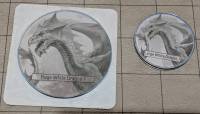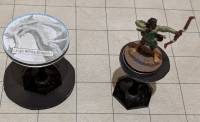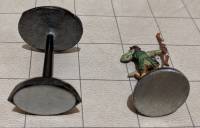News
The Sinking City
I've started putting down thoughts for a new fantasy campaign, currently titled The Sinking City. There is a full blog article available for initial details. I plan on using this with my high fantasy version of YAGS, which requires that I finish writing the magic system for that.
Other notes are also available for now over on the Eyressia page on this site, and I've added a link in the sidebar as well.
The Spires of Xin-Shalast
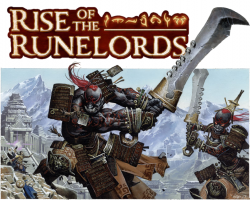
I've started running the final chapter of my Rise of the Runelords campaign, Spires of Xin-Shalast. As part of this, I've started a GM's commentary on the campaign over on my NotASnark blog. It won't contain spoilers for what's coming, but will contain information about plot points that have happened so far.
This campaign will take the characters up to 17th level, which is the highest we've been so far in Pathfinder. I've got ideas though for how to take things beyond this if the players want to continue on to higher levels.
Also on that blog are player accounts of Serpent's Skull and Strange Aeons campaigns, along with everything else I play (such as Delta Green).
Blog
With the coming demise of Google+, which is where most of my public posting has been done for the last eight years, I have created a new site dedicated to blog posts. This can be found at https://blog.notasnark.com/. This site will continue to be used to publish articles and information, but my usual G+ activity will be moved to the new site.
Gaming Plans for 2019
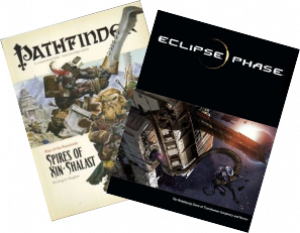
For the coming year, I'm hoping to finish at least one Pathfinder Adventure Path, and also to get in some science fiction gaming with Eclipse Phase.
On the initial front, I'm going to bring my Roll20 based game of Pathfinder to a pause. I was hoping to get it completed before the Christmas break, but various social events prevented that. There's possibly one, maybe two sessions of that before it comes to a good break point. Pausing that will allow me to take a break from GMing for a bit. Whether we fill that time slot with something else (last time we did some Delta Green) I don't know.
For our weekly tabletop session there will be more of our Strange Aeons game. When that pauses, possibly in March, I'll pick up on Rise of the Runelords for the last time, and finish off chapter 6 The Spires of Xin-Shalast. That will be the first adventure path that any of our groups have completed. It's taken about 5 years to get to this point, so it'll be good to reach completion. I've started looking at prepping it now, since there's a chunk of it which is pretty lightly detailed, and I want to flesh it out a bit.
After that, I'd like to run some science fiction, and I have Eclipse Phase in mind. I'm currently toying with some adventure ideas, and I've been reading through the 2nd edition rules. Hopefully the new edition will be complete in time for me to run a game based on them. I really like the background to Eclipse Phase, but the rules felt clunky and over complicated (says the Pathfinder player). Possibly this will get done during the Summer.
There's been some discussion about what people want to do next in our groups, and I'm tempted to run the Iron Gods adventure path much later in the year. Basically, it's Pathfinder fantasy with robots and laser guns. If it works, it could be a lot of fun.
Other than that, we'll be continuing Serpent's Skull during our monthly sessions. That is currently in the fifth chapter, so maybe we'll get to finish that next year.
Gaming in 2018
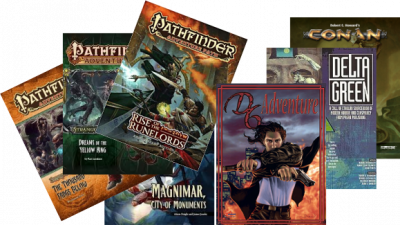 2018 was a fairly predictable year for us as far as gaming has been concerned, given that most of it seems to have involved Pathfinder. We have had four Pathfinder games on the go over the course of the year, two which I've run and two which I've played in.
2018 was a fairly predictable year for us as far as gaming has been concerned, given that most of it seems to have involved Pathfinder. We have had four Pathfinder games on the go over the course of the year, two which I've run and two which I've played in.
First, there's been my City of Monuments game on Roll20, which has been a relatively low powered Pathfinder game set in the city of Magnimar. Being city based, the game has been a lot more socially focused, with actions having potential repercussions on how the group are viewed in the city, and sometimes getting into trouble with the law because they can't just kick down doors and investigate in traditional murder-hobo fashion.
I also ran the fifth chapter of Rise of the Runelords - Sins of the Saviors. Though this was probably the most dungeon crawl-like of this adventure path, it went quite well, though I learned that getting and painting miniatures for all the creatures is a lot more expensive and time consuming that I'd expected. This path started in 2014, and I'm hoping to finish it next year.
At the beginning of the year I tried something different - a one shot adventure set in 1920s Europe using D6 Adventure. The group were a bunch of German (pre-Nazi) secret service agents, tracking down a defecting spy on a very pulp adventure that took them across to Indonesia, with a bit of the supernatural thrown in for good measure. It worked quite well, but the characters seemed a bit overpowered for my tastes, so if I were to run it again, I'd look at either dropping the power level, or upping the opposition.
In terms of what I've played, we also tried Delta Green on Roll20. There was far less need for tactical combat maps compared to Pathfinder (no real surprise there), and it worked quite well and was a lot of fun. The GM made heavy use of real places, and allowed us to use Wikipedia and Google Maps to do some research into things (after all, the game was set in the modern day). We ended up on Devil's Tower, dealing with strange other world entities. Much as you'd expect.
On the Pathfinder front, there was further continuation of Serpent's Skull and Strange Aeons. The former has been our monthly tabletop game, that has been going on almost as long as Rise of the Runelords. We just completed session 52, and are in the fifth chapter of this. It has a relatively standard party of Ranger, Barbarian, Rogue, Cleric and Wizard.
Strange Aeons is the Cthulhu-themed adventure path, which has a different feel to it. My other half is running this, and is a big Cthulhu fan (she also ran the Delta-Green game), so there's a lot more background and detail going on than is probably in the base adventure. This is also an unusual game for us in that we don't have any 'core' characters - I have a Spiritualist, then there's an Inquisitor, a Shaman and an Arcane Archer (probably the most standard character of the group). We did also have a Swashbuckler, but the player for that left to wander the world (seriously).
Finally, we also played the 2d20 version of Conan. This is quite good fun, though definitely leans on the heroic side of fantasy rather than gritty. I like some of the mechanics, and we seem to be able to make good use of the momentum rules - my overpowered warrior can generally generate plenty of momentum for the rest of the group to be able to use. This has been a game we've tended to play in between other games, which has given a break from the various adventure paths.
So 2018 has been a year of mostly standard games, with a lot of Pathfinder. I'm not a huge fan of the D&D systems, but it's something we all know, and I think it's the best implementation I've played. There's definitely a lot of options available which makes it fresh, but can also make it a bit overwhelming at times. I'm also not sure that adventure paths are meant to take 5 years to complete, or whether that's just because we tend to chop and change between systems and campaigns several times a year.
With three regular games ongoing though (one weekly on Roll20, one monthly tabletop, and one weekly tabletop) it's been a relatively full year of gaming.
Flat Pack Tokens
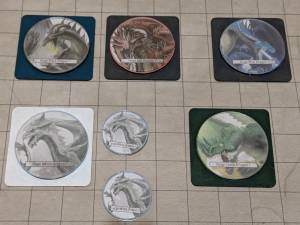 Starting my preparation for the last instalment of Rise of the Runelords, and again taking a different approach to how I represent monsters on the table. For the 5th chapter, I tried to use actual models wherever possible, but that was both expensive (even using plastic Reaper Bones for most of them) and time consuming.
Starting my preparation for the last instalment of Rise of the Runelords, and again taking a different approach to how I represent monsters on the table. For the 5th chapter, I tried to use actual models wherever possible, but that was both expensive (even using plastic Reaper Bones for most of them) and time consuming.
This time I'm looking at something both cheaper and quicker. I'm drawing up tokens in Inkscape, and then printing, cutting and gluing to an MDF base of the appropriate size. I then put a clear plastic base on top, to protect the paper image and allow the tokens to be marked with dry wipe pens.
One problem I had, was I find round tokens don't work well at large sizes. Pathfinder uses square bases for everything, so a round base for a Huge or Gigantic creature makes it non-obvious that the creature also fills the corner squares. Where I source the clear bases from (https://wargamesbuildings.co.uk), don't do square clear plastic bases. After some thinking, I figured I could do all the tokens as round, then stick them onto a square backing base. This seems to be working fine.
I've also done some flight stands, which are constructed from two old Games Workshop flight stands, with a base stuck into each end of the stick. Each stand has magnetic basing material on the top, and a metal base stuck to the bottom. Not only can they be fixed to larger sized bottom bases (to make it clear where a large flying creature is, and for extra stability), but it means they can be stacked without falling over. Sticking metal bases on the bottom of character figures or flat tokens means they also don't fall off the flight stands.
The metallic basing material can be obtained from the same place as above. I can't remember where I got the metal bases from though.
Doing tokens this way also means they take up far less room, and are a lot more durable and portable than actual models. I'll still use some models for the important creatures, but it should greatly simplify everything else.
Party Events
Using the Ultimate Intrigue rules to provide a more tactical approach to social interactions for PCs at a major social event has added an interesting layer to things for my Pathfinder game (see Party Time). However, I've added a couple of extra layers of my own.
Firstly, for each phase of the evening, a PC can chose to be seen doing something. This is in parallel to any specific social interactions with NPCs for discovery or influence. It's effectively a short term reputation which may benefit or hinder the PC's interaction with particular NPCs.
There are seven different activities (just like there are seven Thassilonian sins):
| Sin | Activity | Skill | Save |
|---|---|---|---|
| Lust | Flirting. | Diplomacy, Profession (Courtesan) | Will |
| Gluttony | Eating and drinking. | Survival, Heal | Fort |
| Pride | Showing off dancing or singing. | Perform (Singing or Dancing) | |
| Wrath | Being argumentative. | Intimidate, Perform (Oratory) | Will |
| Sloth | Being a loner. | Stealth, Perception | |
| Greed | Admiration of wealth. | Appraise, Knowledge (Nobility) | |
| Envy | Snide comments and insults. | Bluff, Perform (Comedy) | Will |
Each requires a skill check, and success gives a 'bonus' in that sin. The skill DC starts at 6, and goes up by +3 for each point of bonus the PC already has in that sin. These give bonuses or penalties when influencing different NPCs.
For example, Gluttony and Envy give a bonus for Lady Sila Crusca (she gets on with people have a good time, but is also interested in malicious gossip). Sloth and Wrath give a penalty for her (unsociable people, or those having loud arguments don't interest her).
Some of the activities have a saving throw. Failure can have side effects. Already one PC has failed a Will save for Lust (spend the next phase 'distracted', there is now an untidy bedroom but you've gained a minor favour from some minor NPC). Another has failed Gluttony (caused a mess that servants need to clean up, and a penalty to subsequent saves).
Wrath and Envy fails haven't happened yet, so the PCs aren't aware of the repercussions. Succeeding at Sloth also gives a chance to hear some rumours.
Finally, another possibly background activity is to spend time nosing around the villa where the party is being held. This has been done just enough to know that they have an option of exploring the Library, the Bedrooms or the Servant quarters. If the PCs opt for taking this further, then they'll find out what happens when they do this.
Party Time
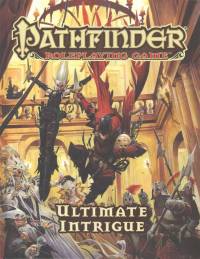
I'm bringing the current run of my Pathfinder campaign to a break point, and I'm ending things with a bit of a party. The PCs have been invited to a 'house warming' being given by a new noble family recently arrived in Magnimar from Kintargo, in Cheliax. Obviously, they are worshippers of Asmodeus, but you shouldn't hold that against them.
I'm making heavy (possibly too heavy) use of the Influence rules in Ultimate Intrigue, and giving the PCs a chance to talk to various NPCs using the rules for discovery and influence. There's nineteen different NPCs they can talk to, plus a generic 'servants' group they can talk to.
Rather than 'influence' providing influence over an NPC, I'm using it as a means to gather information from the NPC. Each level of influence provides more information. For example, here's Lady Sila Crusca:
Lady Sila Crusca
Lady Sila is the wife of Lord Malchus Crusca. She is in her fifties, with long white hair. She is wearing a velvet green dress, threaded with gold and silver.
She is known to have had a relationship with Lonjiku Kaijitsu, and gave birth to his daughter Amaya Kaijitsu who now lives in Westcrown. She is enjoying the food and drink, as well as the gossip, which she seems to take part in using multiple languages.
Discovery
- Knowledge (Geography) or Craft (Calligraphy), DC 14
- Knowledge (Nobility) or Linguistics, DC 19
- Sense Motive, DC 24
Strengths (-4)
- Anyone trying to chat her up. She made that mistake once, not again.
Weakness (+2)
- Has an interest in Westcrown, and willing to discuss events in that city with anyone.
- Is open that her daughter Amaya was fathered by Lonjiku Kaijitsu, and will talk rumours about what has happened to that family.
- Tian women, or anyone in exotic foreign clothing styles.
Influence Skills
- DC 14; you can use Linguistics to impress her with your multilingual talents, or Perform (Oratory) come up with some good haiku.
- DC 19; you can use Bluff to better understand a woman who has lived with secrets, or Diplomacy to win her trust.
- DC 24; you can use Profession (sailor) for she seems unusually interested in talking about sea currents along the Lost Coast.
Influence Benefits
- She is Neutral, Aristocrat 4. Her only daughter, Amaya, was fathered by Lonjiku Kaijitsu, and she took her real (deceased) father’s name a couple of years ago. She now lives in Westcrown. +2 Malchus Crusca
- The Kaijitsu family have mostly left their holdings in Magnimar, but she is trying to talk Amaya to coming back to the city and taking things over.
- She has been trying to talk her husband into finding the wreck’s of Amaya’s grandfather’s fleet along the Lost Coast.
- Aristocrats +1
The rules in Ultimate Intrigue set the DC of skill checks based on the average party level. I'm basing it on the NPCs level (10 + level). This makes some a lot easier to influence than others.
One of the first things that can be discovered about her is her alignment and character classes. Not all NPCs are so easy to find such things out about (some may give inaccurate, or incomplete, information for the first level or two of influence, especially those who are multi-classed).
Some of the NPCs give bonuses to influence other NPCs. So in the case of Lady Sila, she grants a +2 bonus to influence her husband as one of her influence benefits. The bit about the shipwreck is a possible adventure hook, and possibly a clue for a previous plot point they've been sitting on for a while. Her very last benefit is providing a reputation bonus to the Aristocrats faction.
Part of the aim is to figure out who can be spoken to, in order to get information and bonuses to make the harder NPCs easier to influence. Some of the PCs have quite high skills in some areas, which is turning out to be really beneficial for them.
I'm running the evening's events from 8pm through to midnight (when they know they have a special meeting with the head of the family). So far they are up to 9:30pm, and have fully 'unlocked' 3 of the NPCs. They are very unlikely to be able to talk to and find out all the information possible over the course of the evening.
The mechanisation and gamification of the interactions with the NPCs has worked quite well so far, making things a lot more tactical. Rather than just “I'll talk to Lady Renova and make a Diplomacy check”, there's more tactical planning involved.
In order to gamify things further, I've added in some extra options of what the PCs can do of my own. I'll cover them in the next post.
Planetary Rings
I've been adding support for planetary rings to Worldgen over the last couple of weeks, and I now have added the display of them to the 3D view. Initially I played with the idea of rendering them as discrete points, much like I do for asteroid belts. This gives the advantage that they can be rendered correctly under gravity, with inner points orbiting faster than outer points. However, the result doesn't look much like the rings of Saturn.
So now rings have a texture generated at creation time, which is stored in the database. This is then 'just' applied to the ring object as a texture. I say just, because it required some hacking of the threejs library code to apply a texture to a ring in a circular pattern. Fortunately, I'm not the first person who wanted to do that.
The texture currently uses just a very simple algorithm for drawing lines of random colours. The only 'intelligence' is a chance of a gap forming in the rings, where the opacity is reduced. Other than that, there are no patterns or attempts to change the colour between random variations of the same hue.
Currently though, the placement and size of the rings isn't ideal, and I need to put more work into making them look a bit more 'realistic' (where realistic is 'like Saturn', since that's what everyone expects). I do allow for thinner rings, and multiple rings (the ones shown are single rings which have gaps in the texture), but more variations could probably be added.
Note that since all planets lack an axial tilt, their rings are similarly flat. Also, since the ring textures are just lines at the moment, they don't rotate.
Clues
A recent adventure for the Pathfinder game I’m running was more of an investigation to find out what had happened to a couple of young lovers, which involved talking to people and searching for clues. I decided to go for a more mechanical approach to things, rather than just feeding clues with a single Perception check, or relying on them asking the right questions (though there was a bit of the latter thrown in as well).
For the searching for clues, the I gave the option of a number of different skills which could be used, which allowed different characters to contribute. So Sense Motive could be used to search a room, because you’re looking for indications of motive. Knowledge (Nobility) can be used, to find things that might be important to a noble. Rather than just having the person with a high Perception gain all the glory.
So, for example:
Perception
- DC 11: Some clothes are missing, including a pair of boots, and a sword is not hanging from where it should be.
- DC 14: The window is closed, but unlocked. It would be easy to get down from here to the garden.
- DC 17: There are some boot prints on the window sill.
Sense Motive
- DC 11: The bed looks like it was slept in the previous night.
- DC 14: There’s no sign of a rush to leave. Everything is neat and tidy.
Knowledge (Nobility)
- DC 11: There’s a collection of pamphlets for plays, including The Bumbling Goblin, Faerie of the Opera, A Day and Night for Miss Zeldana, and The Inconstant Nymph on the table. Zeldana is put on at the Rose and Rake, the others are for the Triodea. Follow up: Lore (Magnimar) 24: His first cousin, once removed (Durstin Versade), owns the Triodea.
Survival (in the garden)
- DC 14: Probably went down the side of the house, across the garden and out through a side gate. Would not have taken him near the stables.
It actually worked quite well, and I allowed a bit of flexibility, especially when players wanted to ask questions or use skills not listed (so using Stealth to figure out the most likely way to leave the house without disturbing anyone, rather than Survival. That gave him the route, but not the fact that it would have avoided the stables (which a couple of horses were missing from, and a clue that the horses were possibly moved before hand, rather than trying to get them out of the city at night)).
This sort of things could just be roleplayed, with maybe the odd skill check (and that’s my usual approach), but this split the workload between characters so they all got to do something, and it gives more of a feeling that they might fail to get all the clues if they don’t have the right skills. The chance of getting nothing though, and not being able to progress at all was quite low.
There were also multiple ways of getting similar information. There’s a clue pointing at the theatres, but talking to the stableboy also had similar information. Putting both together gives a clear direction of which path to follow, but either one should give some hints which could be followed up with a bit more investigation.
For talking to witnesses and getting information out of them, I used a slightly modified form of the Pathfinder intrigue and influence rules for social combat. My main reason for using these was that the next adventure is going to be a party where I’m planning on using them quite heavily, and I wanted to give an introduction to the rules before hand.
Anyway, the PCs think the lovers sneaked out of the city at night to elope, and are heading to Sandpoint. So next session will probably be heading out of Magnimar along the Lost Coast Road to find them.

